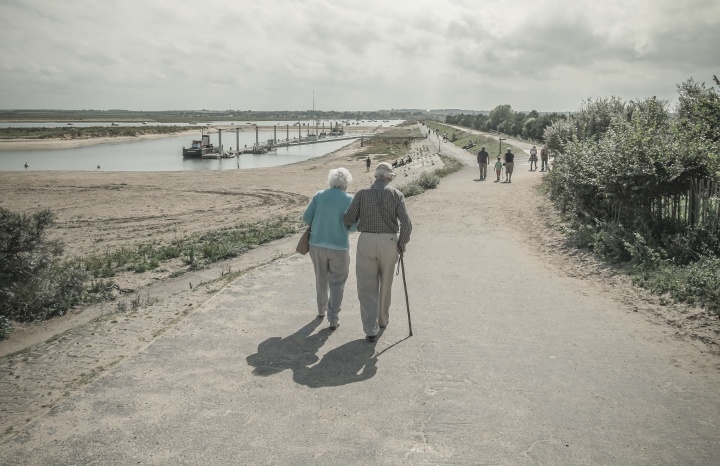5 Ways to Help Those Who Are Less Mobile
Downloads
5 Ways to Help Those Who Are Less Mobile

Over the years I have had several experiences of having to rely on others when walking, lifting, or carrying objects that might be too heavy or bulky. I also have family members and friends who depend on wheelchairs, walkers, and other implements that make their life a little easier, while offering some independence.
Offering a stable arm
It is wonderful to see someone jump up and want to help those who might not be as physically capable. There are also times when it is obvious that an individual would like help, but they are unsure how to ask for it. I would like to share a few tips with you on how to help those who are less mobile, whether at church, a family function, or during your day-to-day routine.
When someone seems to need a little extra help with walking, you can offer your arm for stability. You do this by extending your arm and allowing them to take hold. You do not grip their arm or hand, but allow them to hold on in a way that is most comfortable for them. You are not guiding them, but offering stability. This means walking at their pace and allowing them to lead the way. Walking at a pace that is faster than they are capable of, or leading the way, can cause a sense of insecurity, which can lead to fear of falling.
Pushing the wheelchair
A wheelchair offers the ability to move around without the fear of falling. If it looks like someone is having difficulty with their chair, you might ask if they would like for you to push it. Don’t take offense if they would rather not accept your help. A wheelchair is a personal piece of equipment, and having control over it can give an individual a sense of safety. Allowing someone else to push it means giving up any control one might have over the situation. If your offer is accepted, remember to use a slow and steady approach. Sudden movements, or going too fast can leave the individual feeling vulnerable. You will also want to watch their foot movements. They may choose to use one foot to keep your pace steady. Pushing too fast can cause injury to that foot or ankle.
Helping someone with a cane
A cane is there to offer stability, take pressure off of certain joints, and protect against falls. It is best to allow someone who is using a cane to do so without interference. Trying to help by taking the other arm can throw their balance off and increase the chance of falling. However, one of the best ways to help someone with a cane is to carry anything they may have with them. Doing so will give them the opportunity to focus on maintaining their balance.
When a walker is in use
Walkers offer stability, balance and mobility. They may look awkward, but they fill a need that may not be met in any other way. It allows for an individual to be mobile and have some independence while still protecting against joint damage and falls. In most cases there is no need to help an individual move about with their walker. Trying to do so could cause them to lose their balance. However, helping someone load or unload the walker from a vehicle is almost always appreciated. They can be bulky and at times heavy. Some walkers offer a place for carrying small items, while others don’t. If you feel as if an individual could use some help carrying something, it would be nice to offer. Do not take it personally if your offer is denied. Many people who use a walker feel as if they have everything under control and like to maintain independence.
Standing or sitting
You might notice that someone has difficulty when standing from a seated position, getting in or out of a car, or when sitting down. Helping someone who may be struggling with one of these issues, may be as simple as offering your arm as stability. If the person is strong enough, they will grab your arm and use it to pull themselves to a standing position or lower themselves into the seat. It is important not to pull or push. It is better to allow the individual to make adjustments at their own pace.
When you can combine your desire to help those in need with an understanding of how best to be of service, your presence can offer a sense of security.
